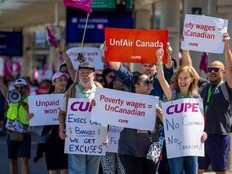EDITORIAL: The financial risks of ‘nation-building’

Article content
Now that Prime Minister Mark Carney’s legislation to fast-track “nation-building” projects has been approved, the concern is whether taxpayer money spent building them will be respected.
Nation-building projects are what governments used to call capital spending and we already know that Carney is planning to finance federal projects with more public debt.
In his election platform alone, Carney identified $130 billion in new spending over four years with total deficit spending of $224.8 billion, 71% higher than what the Trudeau government said it would spend.
The Carney government will also be green-lighting selected capital projects submitted by the provinces involving both public and private sector spending.
The problem is we all know what happens when governments fast track public spending while ignoring the rules aimed at giving taxpayers good value for money.
It ends in financial disasters such as the ArriveCAN app, developed during the pandemic, that was supposed to cost $80,000 and ended up at almost $60 million, according to Auditor General Karen Hogan.
She warned that the failure of public servants to follow contracting rules that led to the ArriveCAN mess is widespread across the government, based on her investigations of other contracts.
The history of military purchases by the defence department alone is replete with financial fiascoes.
In her recent report, Hogan estimated the cost of replacing Canada’s aging fleet of CF-18 fighter jets with 88 new F-35s, increased by almost 50% between 2022 and 2024 from $19 billion to $27.7 billion.
She said it happened because the government relied on outdated data and failed to develop contingency plans for managing financial risks associated with the project.
Going forward, spending on the military is poised to skyrocket given Carney’s commitment to meet Canada’s NATO target of spending 2% of annual GDP on defence by March 31, 2026, rising to 5% by 2035 at an added estimated cost of $150 billion annually.
Meanwhile, parliamentary budget officer Yves Giroux said he can’t assess whether Carney’s claim he will balance the operating budget in three years is credible because the government hasn’t provided definitions of what it means by operational versus capital spending.
Unless the government cleans up its act, we’re facing years of billion-dollar boondoggles that we’ll only learn about years after the fact.











Postmedia is committed to maintaining a lively but civil forum for discussion. Please keep comments relevant and respectful. Comments may take up to an hour to appear on the site. You will receive an email if there is a reply to your comment, an update to a thread you follow or if a user you follow comments. Visit our Community Guidelines for more information.